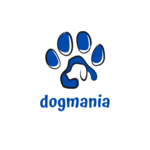The Science Behind Grain-Free Dog Food: Understanding the Nutritional Impact
As more pet owners seek to provide the best nutrition for their furry friends, grain-free dog food has become a popular choice. But what exactly is grain-free dog food, and what are its nutritional impacts? In this article, we'll delve into the science behind grain-free diets for dogs, exploring the benefits, potential risks, and how to determine if it’s the right choice for your pet.
What is Grain-Free Dog Food?
Grain-free dog food eliminates grains such as wheat, corn, rice, and oats from its ingredients. Instead, these diets often use alternative carbohydrate sources like potatoes, peas, lentils, and sweet potatoes. The idea behind grain-free diets is to more closely mimic the ancestral diet of dogs, which primarily consisted of meat and limited plant matter.
Nutritional Composition of Grain-Free Dog Food
Protein
Grain-free dog foods typically have higher protein content compared to traditional dog foods. Proteins are crucial for a dog’s muscle development, immune function, and overall health. Common protein sources in grain-free foods include:
- Chicken
- Beef
- Fish
- Lamb
Carbohydrates
While grains are absent, grain-free dog foods still contain carbohydrates from alternative sources. These sources are often chosen for their lower glycemic index, which can help in managing blood sugar levels. Examples include:
- Sweet Potatoes
- Peas
- Lentils
- Chickpeas
Fats
Healthy fats are essential for energy, skin and coat health, and cognitive function. Grain-free dog foods usually include fats from:
- Fish Oil
- Chicken Fat
- Flaxseed Oil
Fiber
Fiber aids in digestion and maintaining healthy gut flora. Grain-free dog foods provide fiber from fruits, vegetables, and legumes, ensuring proper digestive health.
Vitamins and Minerals
A well-formulated grain-free diet includes all necessary vitamins and minerals to support a dog’s overall health. Ingredients like carrots, blueberries, and spinach are commonly used to provide these essential nutrients.
Benefits of Grain-Free Dog Food
Allergy Relief
One of the primary reasons pet owners choose grain-free dog food is to address food allergies. Dogs can be allergic to grains, which may cause symptoms like itching, ear infections, and gastrointestinal issues. Switching to a grain-free diet can alleviate these symptoms.
Improved Digestive Health
Grain-free dog foods often contain higher-quality ingredients that are easier to digest. The use of alternative carbohydrate sources with higher fiber content can promote better digestion and regular bowel movements.
Increased Energy Levels
The high protein and fat content in grain-free diets can lead to increased energy levels and better overall vitality. This is particularly beneficial for active and working dogs.
Healthier Skin and Coat
Many dog owners report shinier coats and healthier skin after switching to grain-free diets. The inclusion of omega-3 and omega-6 fatty acids from sources like fish oil contributes to this improvement.
Potential Risks and Controversies
Nutritional Imbalances
While grain-free diets can be beneficial, they must be carefully formulated to avoid nutritional imbalances. Some grain-free dog foods may lack essential nutrients if not properly balanced, leading to health issues over time.
Heart Health Concerns
Recent studies have raised concerns about a potential link between grain-free diets and canine dilated cardiomyopathy (DCM), a heart condition. The FDA is investigating these claims, and while no definitive conclusions have been made, it’s essential to stay informed and consult with your veterinarian.
Misconceptions About Grain Allergies
Not all dogs are allergic to grains, and switching to a grain-free diet without a confirmed allergy may not provide any additional benefits. It’s crucial to determine if your dog has a specific grain allergy through proper testing.
Choosing the Right Grain-Free Dog Food
Consult Your Veterinarian
Before making any dietary changes, consult your veterinarian. They can provide personalized advice based on your dog’s health, breed, age, and specific needs.
Check for Balanced Formulas
Ensure the grain-free dog food you choose is AAFCO (Association of American Feed Control Officials) approved, indicating it meets established nutritional standards. Look for foods that provide a balanced blend of proteins, fats, carbohydrates, vitamins, and minerals.
Monitor Your Dog’s Health
After switching to a grain-free diet, closely monitor your dog’s health and behavior. Look for positive changes like improved energy levels, better digestion, and healthier skin and coat. Also, watch for any adverse reactions and consult your veterinarian if needed.
Conclusion
Understanding the science behind grain-free dog food is crucial for making informed decisions about your pet’s nutrition. While there are clear benefits to grain-free diets, such as allergy relief and improved digestion, it’s essential to consider potential risks and ensure a balanced, well-formulated diet.
Always consult your veterinarian before making dietary changes and choose high-quality, AAFCO-approved grain-free foods. By staying informed and attentive to your dog’s health, you can provide the best nutrition for a happy, healthy life.
Choosing the right diet for your dog is a journey. With the right knowledge and guidance, you can make choices that will support your furry friend’s well-being for years to come.



leave me your thoughts here